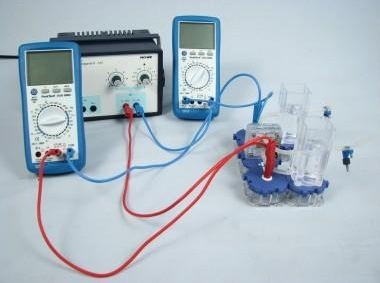setTimeout(function(){
window.print();
},500)

Technical data Characteristic curve of a PEM electrolyserArticle no: P9516500  Principle The PEM electrolyser consists of a thin, proton-conducting, polymer electrolyte membrane (PEM). The two sides of this are each coated with a catalysing material and act as anode and cathode. The theoretical decomposition voltage of water is 1.23 V, but it is higher in practice because of losses in the electrolyser. In the electrolyser used here it is about 1.5 V. This voltage must be exceeded for water molecules to be decomposed to hydrogen and oxygen. The current-voltage characteristic of a PEM electrolyser is to be recorded and examined in this experiment. Benefits
Tasks When does an electrolyser start to work? Scope of delivery
| |||||||||||||||||||||||||||
PHYWE Systeme GmbH & Co. KG
Robert-Bosch-Breite 10 – 37079 Göttingen – Germany
www.phywe.com
Robert-Bosch-Breite 10 – 37079 Göttingen – Germany
www.phywe.com

